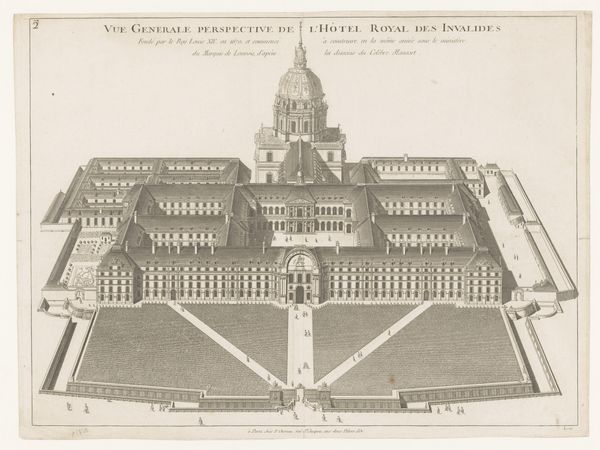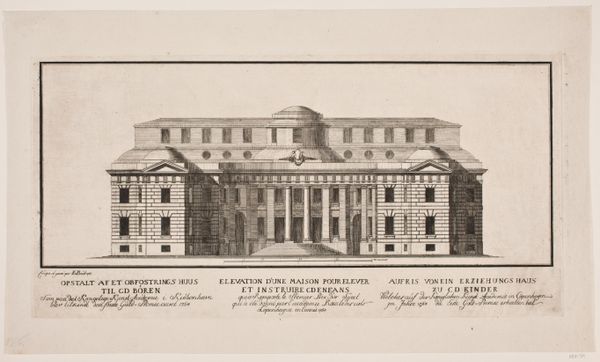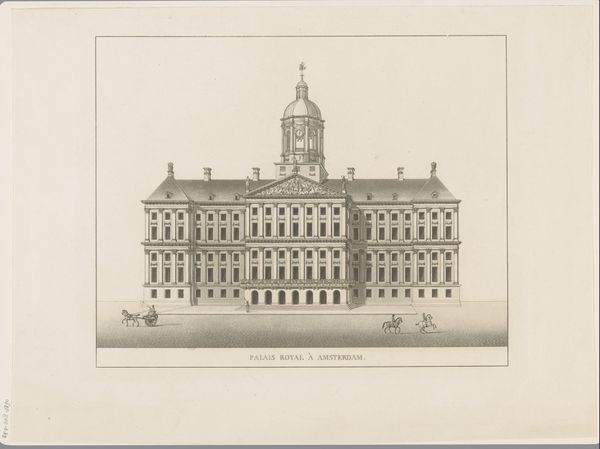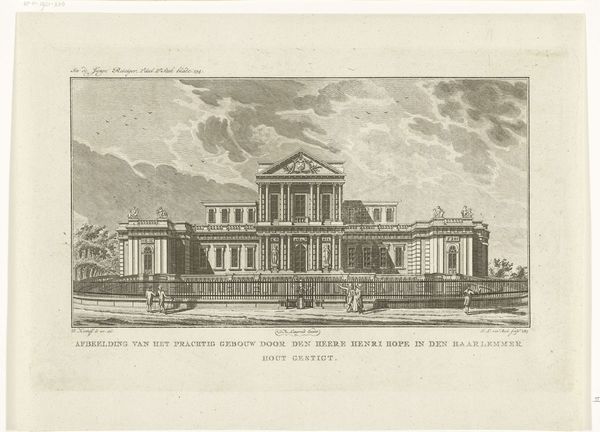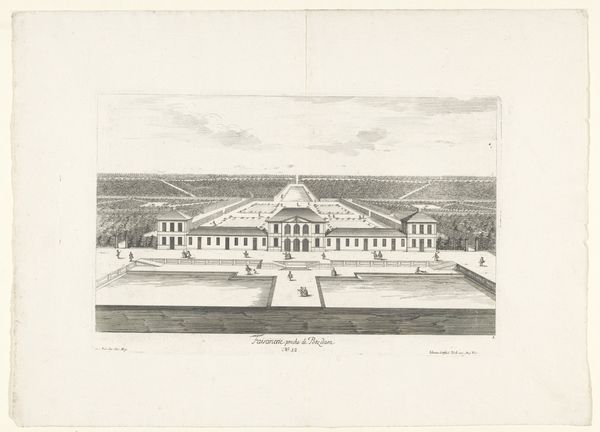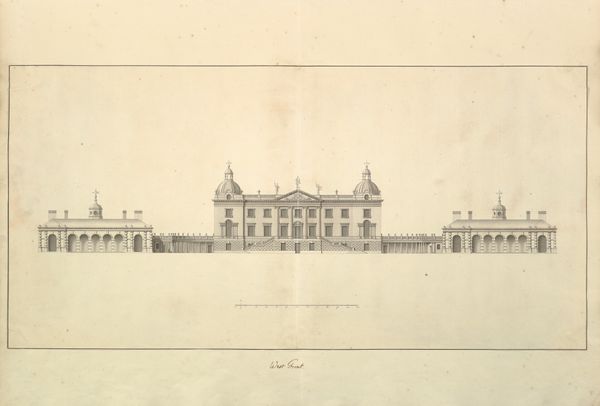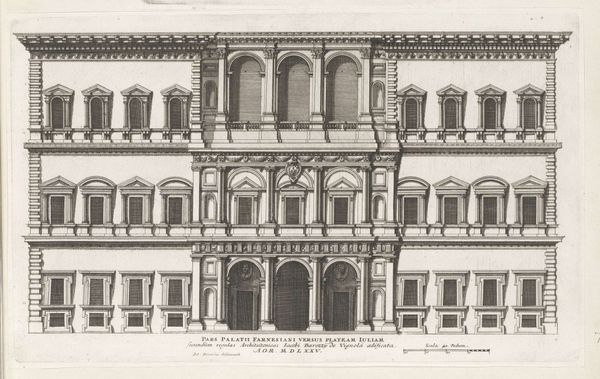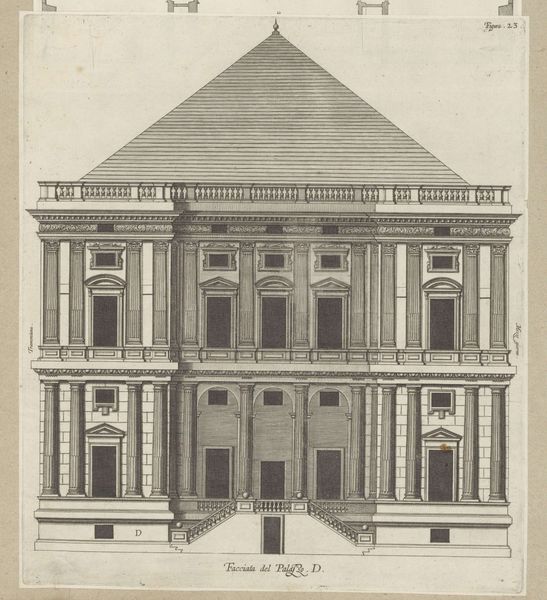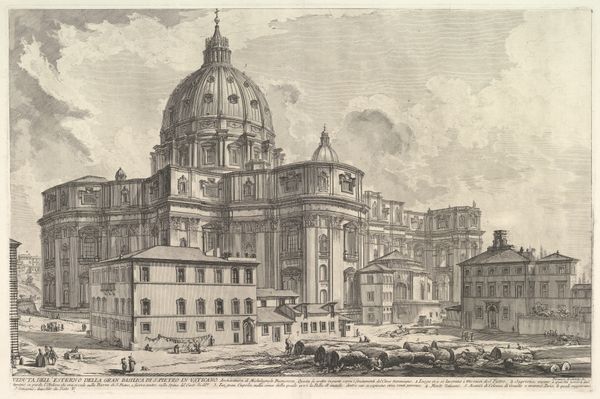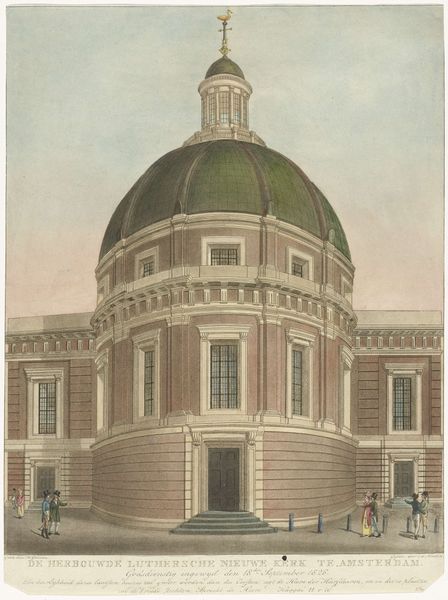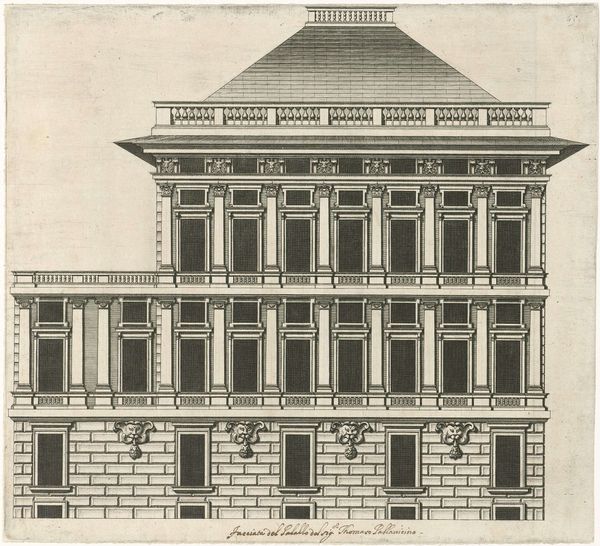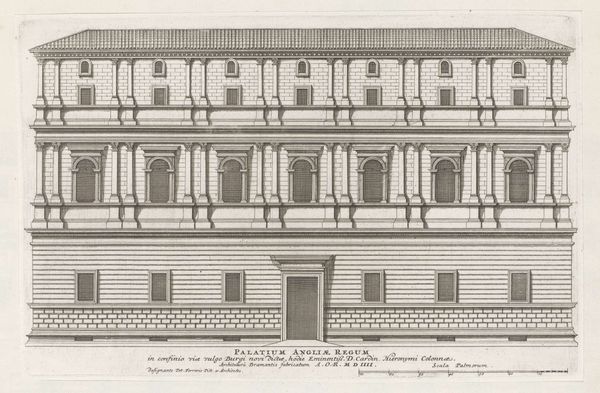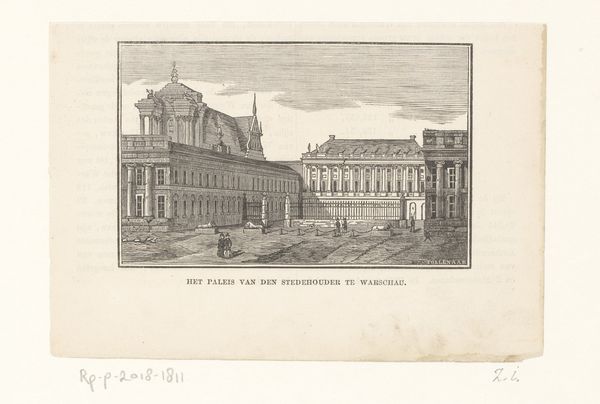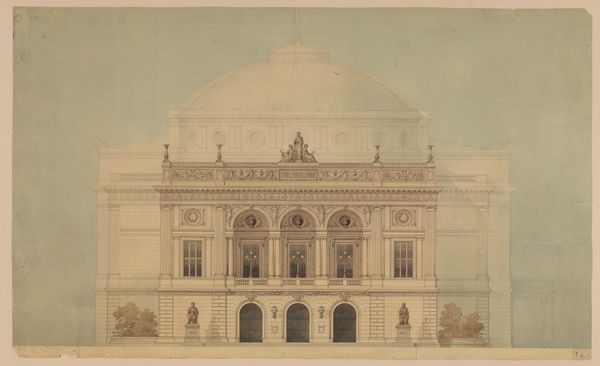
drawing, print, etching, architecture
#
drawing
#
neoclacissism
# print
#
etching
#
architectural plan
#
geometric
#
architectural drawing
#
cityscape
#
architecture
Dimensions: 223 mm (height) x 430 mm (width) (bladmaal), 209 mm (height) x 414 mm (width) (plademaal)
Curator: Immediately, I'm struck by this dreamlike quality despite the architectural precision; it feels like Piranesi visited Versailles and decided to draft something grander. Editor: We're looking at "Opstalt af et landslot," dating back to 1764, by Johannes Gottfred Bradt. This print combines etching and drawing techniques, and you can find it on display at the SMK, the National Gallery of Denmark. It appears to be a proposed design for a palatial building, perhaps a royal residence. Curator: Definitely captures that aspirational mood, that almost manic ambition of Neoclassicism. It’s all straight lines, repeating motifs, and overwhelming symmetry – the perfect factory for an autocrat’s ego! And the dome seems like it might float away, a little top-heavy for the rest of the building. Editor: The materials and process of this work, particularly its status as a print, also suggest wider consumption by the growing middle class, indicating perhaps more public input and therefore subtly shaping—though still indirectly—the trajectory and ultimate functionality of any resultant physical architecture based on this draftsmanship. Bradt certainly used printmaking to engage with a wider audience. Curator: I suppose if we were to see something built like this today, it would have some new, insidious corporate name slapped on the front... I imagine all those windows would probably have advertisements on them, these days. The print’s formal structure mirrors, I guess, the societal structures taking hold at the time— a rising merchant class, perhaps? Editor: Precisely. Consider how Bradt negotiates this complex interplay, giving form to both aspirational aristocratic desires and simultaneously responding to market forces via reproducible mediums and, I would further assume, a somewhat engaged public. This artwork exemplifies these economic undercurrents. Curator: Ultimately though, there is an almost naive and innocent character to this artwork. Looking at the cityscape itself, beyond its technical and cultural underpinnings, one still catches the lingering scent of that very potent desire that humanity keeps possessing: to raise, to organize, to shape the landscape to one's liking... it all makes me grin at that quixotic nature of this human enterprise. Editor: An insightful final reflection... thank you.
Comments
No comments
Be the first to comment and join the conversation on the ultimate creative platform.
